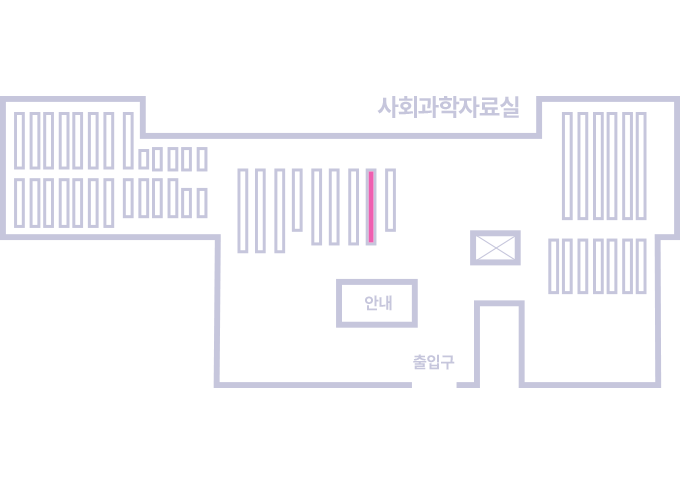권호기사보기
| 기사명 | 저자명 | 페이지 | 원문 | 기사목차 |
|---|
| 대표형(전거형, Authority) | 생물정보 | 이형(異形, Variant) | 소속 | 직위 | 직업 | 활동분야 | 주기 | 서지 | |
|---|---|---|---|---|---|---|---|---|---|
| 연구/단체명을 입력해주세요. | |||||||||
|
|
|
|
|
|
* 주제를 선택하시면 검색 상세로 이동합니다.
| 번호 | 참고문헌 | 국회도서관 소장유무 |
|---|---|---|
| 1 | 최종화(2020). 포스트 코로나 시대의 디지털 전환과 언택트 혁신. FUTURE HORIZON 46, 52-55. | 미소장 |
| 2 | 김민경ㆍ최영림ㆍ남윤자(2010), 당의의 3차원 시뮬레이션 활용을 위한 기초 연구, 한국의류학회지 34(11). | 미소장 |
| 3 | 김민정(2022), CLO 3D를 활용한 전통의상 재현 연구: 녹원삼의 소재표현 및 디테일 표현을 중심으로, 한국브랜드디자인학회 61. | 미소장 |
| 4 | 강서영ㆍ이연규ㆍ김성민ㆍ안보연(2023). 외재(畏齋) 이단하(李端夏) 부인예복(禮服)의 3D 재현에 관한 연구, 服飾73. | 미소장 |
| 5 | 당하루ㆍ김숙진 (2022), 소수민족 복식 가상 박물관의 구축을 위한 3D 가상의상 제작연구-중국묘족복식을 중심으로-, 服飾72(2). | 미소장 |
| 6 | Liu, K., Gao, Y., Zhang, J. et al. (2022), Study on digital protection and innovative design of Qin opera costumes. Herit Sci 10. | 미소장 |
| 7 | Liu, Kaixuan, Wu, Hanhan, Gao, Yuanyuan, Zhu, Chun, Ji, Yanbo and Lü, Zhao. (2023), Archaeology and Virtual Simulation Restoration of Costumes in the Han Xizai Banquet Painting, AUTEX Research Journal 23(2). | 미소장 |
| 8 | 순위엔(2023), 중국 전통 귀족 여성 예복의 패턴 및 3D복원연구 청주대학교대학원 박사학위논문. | 미소장 |
| 9 | Li Kexin (2023), 북경 고궁박물관소장 청나라 황후복식의 3D 가상의상제작 연구, 세종대학교대학원 박사학위논문. | 미소장 |
| 10 | 순위엔ㆍ김지현ㆍ나미향 (2023), 중국 전통 귀족 여성예복인 직거심의(直裾深衣)의 패턴 및 3D 복원 연구, 한국의상디자인학회지 25(4). | 미소장 |
| 11 | 국립중앙박물관 소장품 검색 [2023. 9. 3. 검색] https://www.museum.go.kr/site/main/relic/search/view?relicId=731 | 미소장 |
| 12 | 국립중앙박물관 소장품 검색 [2023. 9. 3. 검색] https://www.museum.go.kr/site/main/relic/search/view?relicId=188648 | 미소장 |
| 13 | 국립중앙박물관 소장품 검색 [2023. 9. 3. 검색] https://www.museum.go.kr/site/main/relic/search/view?relicId=8693 | 미소장 |
| 14 | 네이버 지식백과 문화원형 디지털콘텐츠 [2023. 10. 30. 검색] https://m.terms.naver.com/list.naver?searchId=au7207 | 미소장 |
| 15 | 한국전통문화연구원 (2006), 제7회 조선왕조 궁중연회: 무신진찬. [2023. 11. 3. 검색] https://koreandance.modoo.at/?link=3fxp0249 | 미소장 |
| 16 | 김소현(2017), 조선 왕실 여인들의 복식, 민속원. | 미소장 |
| 17 | 한양도성 타임머신 시맨틱 데이터아카이브, 무신년진찬. [2024. 1. 20. 검색] http://dh.aks.ac.kr/hanyang2/wiki/index.php/%EB%AC%B4%EC%8B%A0%EB%85%84%EC%A7%84%EC%B0%AC | 미소장 |
| 18 | 한양도성 타임머신 시맨틱 데이터 아카이브, 정재여령. [2024. 1. 20. 검색] http://dh.aks.ac.kr/hanyang2/wiki/index.php/%EC%A0%95%EC%9E%AC%EC%97%AC%EB%A0%B9%EB%B3%B5%EC%9E%A5 | 미소장 |
| 19 | 한양도성 타임머신 시맨틱 데이터 아카이브, 2022 3D모델링-복식. [2024. 1. 20. 검색] http://dh.aks.ac.kr/hanyang2/wiki/index.php/2022_3D%EB%AA%A8%EB%8D%B8%EB%A7%81-%EB%B3%B5%EC%8B%9D | 미소장 |
| 20 | 한국문화정보원(KCISA) (2022), Korean_traditional_clothes_Chunaengjeon [2023. 6. 20. 검색] https://connect.clo-set.com/detail/9a34d631107e48b98cf2859410f34f07; Korean_traditional_clothes_Geommubok https://connect.clo-set.com/detail/dbbc210af6834ac3a37176e84c0fa9d5 | 미소장 |
| 21 | 한국문화재재단 (2023), [vlog] 증강현실로 보는 헌종의 궁중 효도 잔치 | 창경궁 브이로그 [2024. 1. 5 검색] https://www.youtube.com/watch?v=TJJzacXQaXg | 미소장 |
| 22 | <무신년, 만세의 술잔을 올리다. - 실감의궤 : 연향> 전시. https://www.chf.or.kr/cont/view/play/month/menu/265?thisPage=1&idx=109116&searchCategory1=601&searchCategory2=&searchField=all&searchDate=202305&weekSel=&searchText= | 미소장 |
| 23 | 김얼(2013), 무신진찬도 복원모사 기법연구, 동국대학교 석사학위논문. | 미소장 |
| 24 | 윤은영ㆍ김은정(2016), 춘앵전 여령 복식에 관한 연구–花冠과 紅錦繡韝의 복원 양상을 중심으로–, 韓國思想과 文化81. | 미소장 |
| 25 | 진덕순ㆍ이은주(2018), 의궤를 통해 본 궁중 검기무 복식. 국악원논문집 37. | 미소장 |
| 26 | 최윤희ㆍ이은주(2022), 조선후기 궁중 선유락 복식 연구,국악원논문집 48. | 미소장 |
| 27 | 최윤희ㆍ이은주(2023), 조선후기 궁중 무고 여령 복식에 관한 연구, 국학연구, 49. | 미소장 |
| 28 | 이희정(2022), 조선후기 궁중 정재(呈才) 여령(女伶)의 황초삼(黃綃衫) 연구, 단국대학교 석사학위논문. | 미소장 |
| 29 | 이희정ㆍ최연우ㆍ박윤미 (2023), 조선후기 궁중 정재 여령(女伶)의 황초삼(黃綃衫) 연구, 韓服文化26(1). | 미소장 |
| 30 | 박가영ㆍ이은주(2008), 순조대 궁중무용복식 고증과 디지털콘텐츠화, 韓服文化11(1). | 미소장 |
| 31 | 이은주ㆍ김영선ㆍ이경희 (2021), 정조대 <서장대야조도(西將臺夜操圖)>의 관직자 복식 고증, 문화재 54(2). | 미소장 |
| 32 | 이경희ㆍ김영선ㆍ이은주(2021), 정조대 〈서장대야조도(西將臺夜操圖)〉장용영(壯勇營) 하급 군사(軍士)의 군복(軍服) 고증, 문화재 54(4). | 미소장 |
| 33 | 한국공예디자인문화진흥원ㆍ한복문화학회 (2023), 2023년도 (사)한복문화학회 한복문화주간 한복포럼: 1848년 무신진찬 정재복식의 고증과 재현, 8. | 미소장 |
| 34 | 헌종무신진찬의궤 권3, 공령, https://kyudb.snu.ac.kr/book/text.do?book_cd=GK14372_00&vol_no=0004 | 미소장 |
| 35 | 단국대학교석주선기념박물관 소장 덕온공주 견마기 [2023. 09. 10 검색] https://museum.dankook.ac.kr | 미소장 |
| 36 | 경운박물관 소장 단속곳(유물번호 9980) [2023. 09. 10 검색] https://www.emuseum.go.kr/detail?relicId=PS0100413200100998000000 | 미소장 |
| 37 | 선유락 [2023. 09. 26 검색], https://encykorea.aks.ac.kr/Article/E0028881 | 미소장 |
| 38 | 문화재청 무형문화재과 (2006), 문화재대관 중요민속자료 2: 복식자수편, 문화재청, p.192. | 미소장 |
| 39 | 흥완군 의복 [2023. 9. 20 검색], https://encykorea.aks.ac.kr/Article/E0066034 | 미소장 |
| 40 | 최영림(2020), 3D 액세서리디자인 –CLO 5.2-, 교학연구사, 111-125. | 미소장 |
| 41 | 헌종무신진찬의궤 권 4, http://kyudb.snu.ac.kr/book/text.do?book_cd=GK14372_00&vol_no=0004 | 미소장 |
| 42 | CLO에서 자수 표현은 어떻게 하나요? [2023. 09. 26 검색] https://support.clo3d.com/hc/ko/articles/115013821908-CLO%EC%97%90%EC%84%9C-%EC%9E%90%EC%88%98-%ED%91%9C%ED%98%84%EC%9D%80-%EC%96%B4%EB%96%BB%EA%B2%8C-%ED%95%98%EB%82%98%EC%9A%94 | 미소장 |
*표시는 필수 입력사항입니다.
| 전화번호 |
|---|
| 기사명 | 저자명 | 페이지 | 원문 | 기사목차 |
|---|
| 번호 | 발행일자 | 권호명 | 제본정보 | 자료실 | 원문 | 신청 페이지 |
|---|
도서위치안내: 정기간행물실(524호) / 서가번호: 국내14
2021년 이전 정기간행물은 온라인 신청(원문 구축 자료는 원문 이용)

우편복사 목록담기를 완료하였습니다.
*표시는 필수 입력사항입니다.
저장 되었습니다.